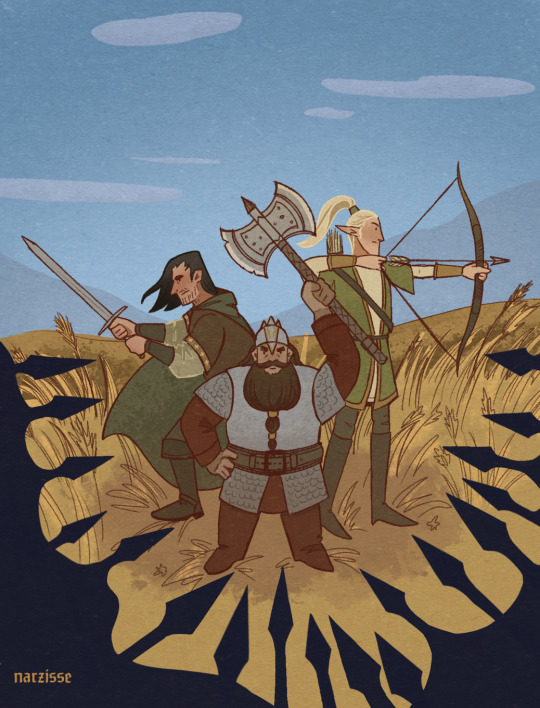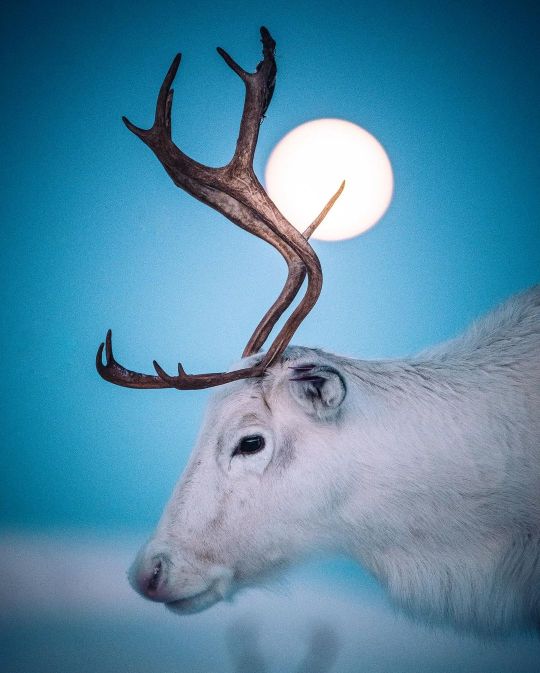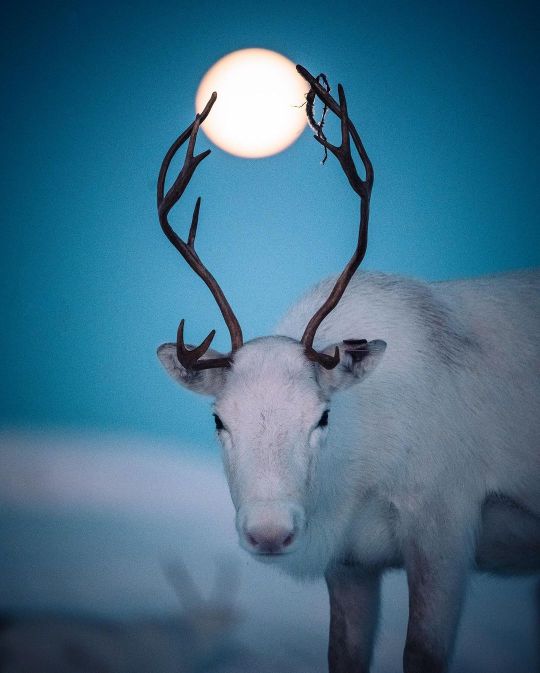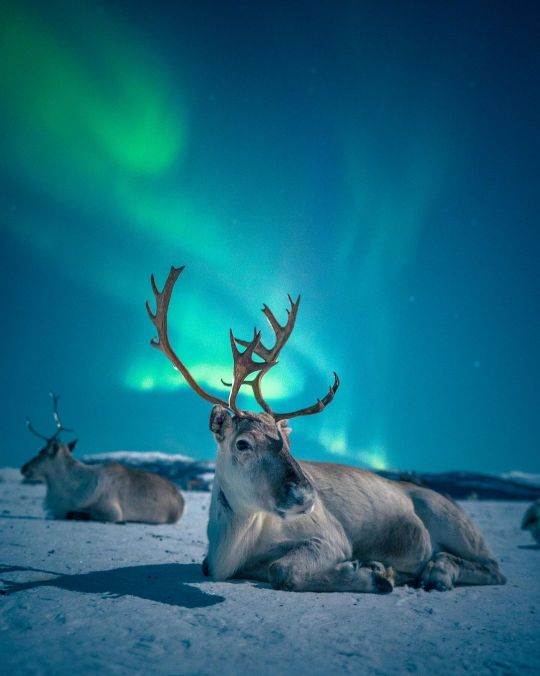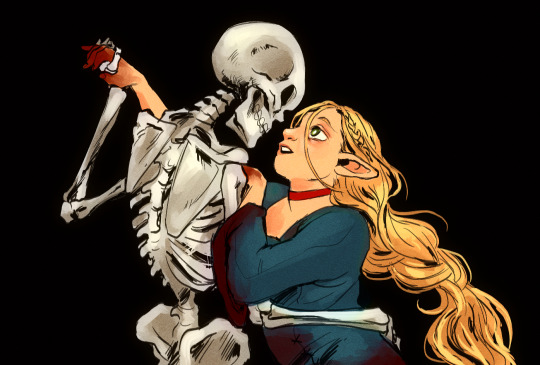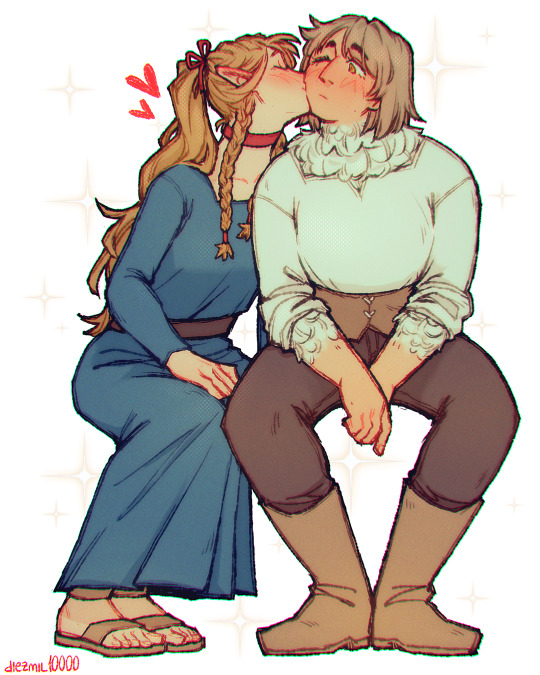Text
2K notes
·
View notes
Text


Linocut prints by William Hays.
~ Dawn
~ After the Storm, 2016.
4K notes
·
View notes
Text
Les Mis Canon-era Paris Photographs: Jean Valjean and Cosette’s route to escape Javert, in Pictures!

Jean Valjean's escape through Paris is Victor Hugo's way of mourning the Paris he knew from before his exile, the Paris before the modern renovations.
Hugo wrote Les Mis from exile in Guernsey, at the same time as Paris was undergoing a series of massive renovations. The "Old City" of medieval Paris that Hugo loved was being replaced by the “New City" of Baron Haussman. The dark medieval labyrinth lit by oil lamps was being replaced by modern wide streets and standardized architecture lit by gas lamps. Victor Hugo is nostalgic for the Paris he remembers before his exile-- so Jean Valjean is able to escape Javert using things unique to the Old City. He escapes through a labyrinth of tiny medieval streets in a neighborhood Hugo claims was destroyed during the renovations; he climbs over the convent wall using the rope from an oil lamp, the very oil lamps that were being replaced by the more modern gas lanterns. The dark maze hides him from police surveillance in a way modern streets cannot.
A man named Charles Marville photographed Paris shortly before many (though not all) of the renovations occurred. In this post I'll go through all the different streets mentioned in the Valjean-Javert Paris chase chapters, and provide Marville's photographs whenever they the image has been labeled with the name of the street. Note that there may be some inaccuracies. Some street names changed over time.
Here is a map of what the chase looks like, taken from the book "Paris in the Times of Victor Hugo."
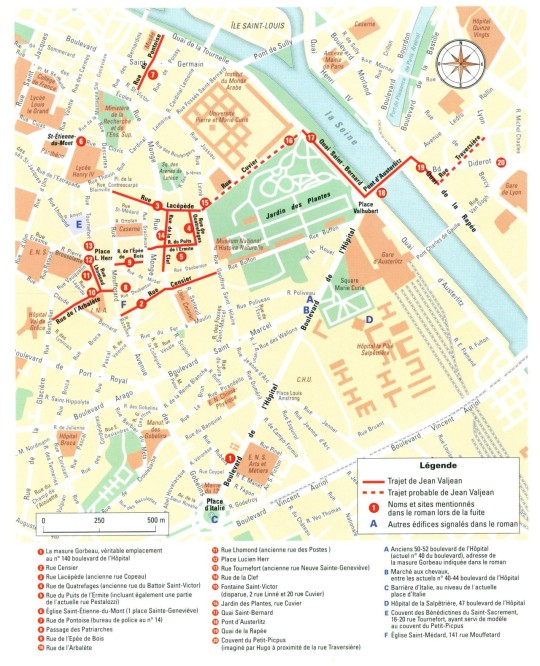
A quick overview: Jean Valjean starts in a slummy half-built suburban area. This area is highly associated with the King; the royal Jardin des Plantes is nearby, and King Louis XVIII often rides by in his carriage during the afternoons. After travelling down a bunch of streets, "zigzagging" back and forth, Jean Valjean decides to cross the Seine over the Bridge of Austerlitz (a bridge named after one of Napoleon's victories.) Then he reaches the areas of the city near the Faubourg Saint Antoine that are more associated with working class rebellion. From there he enters a dark isolated half-built medieval neighborhood near marshes and timberyards, with narrow mazey alleyways, that Hugo mostly made up. Hugo pretends this medieval neighborhood used to exist, but was destroyed like many others during the recent renovations. Now that we've gotten the overview out of the way, let's go more specific!
The chase starts out in "the old quarter of the Marche aux Chevaux." At the time, this was a less inhabited and poorer area of Paris; it's described as basically a slum. Here are some of Marville's photographs :

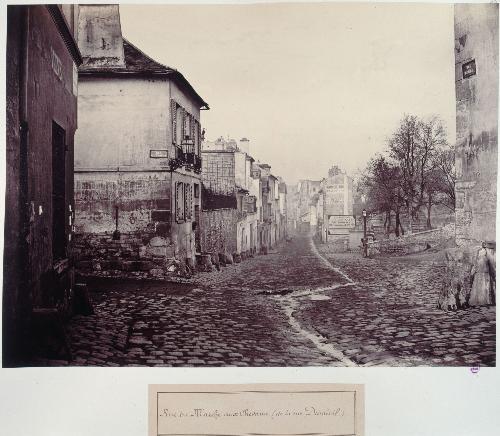
Then we're told "Jean Valjean described many and varied labyrinths in the Mouffetard quarter, which was already asleep, as though the discipline of the Middle Ages and the yoke of the curfew still existed. He combined in various manners, with cunning strategy, the Rue Censier:"
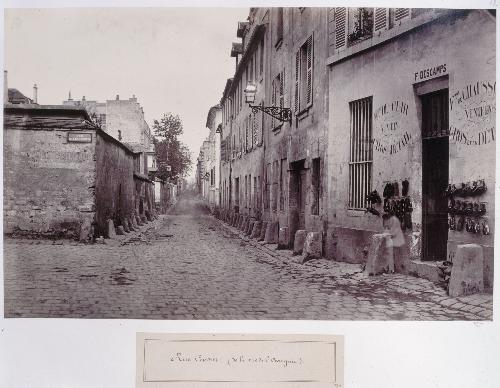
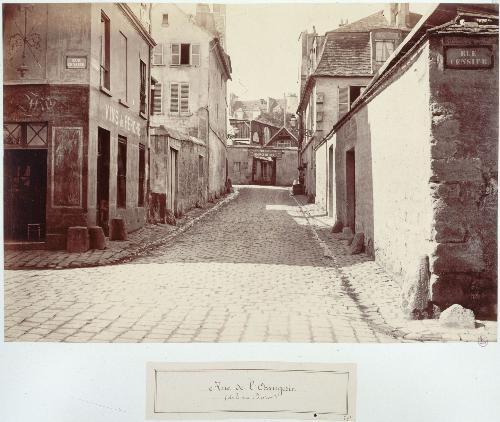


"and the Rue Copeau," (according to the map I linked earlier, the Rue Copeau is now the Rue Lacepede. Here is Marville's pic:)

"the Rue du Battoir-Saint-Victor and the Rue du Puits l’Ermite. There are lodging houses in this locality, but he did not even enter one, finding nothing which suited him. He had no doubt that if any one had chanced to be upon his track, they would have lost it."
"As eleven o’clock struck from Saint-Étienne-du-Mont:" (note: this refers to the church of Saint-Etienne)

"he was traversing the Rue de Pontoise, in front of the office of the commissary of police, situated at No. 14." (Jean Valjean sees Javert and the police following him on this street, because they're visible in the light of the lantern from the police station.)
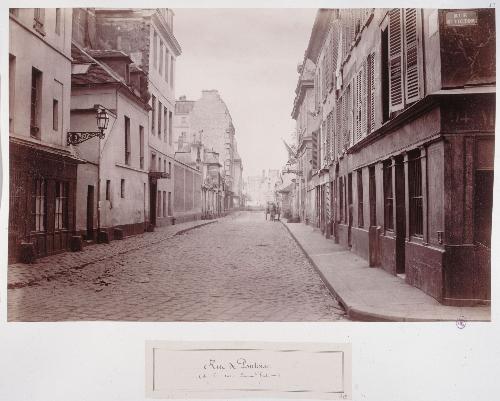
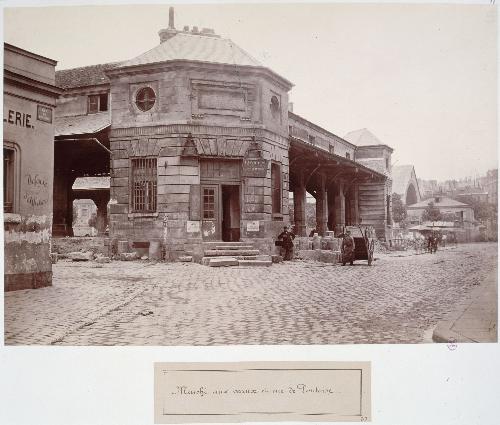
"He took a circuit, turned into the Passage des Patriarches, which was closed on account of the hour,"
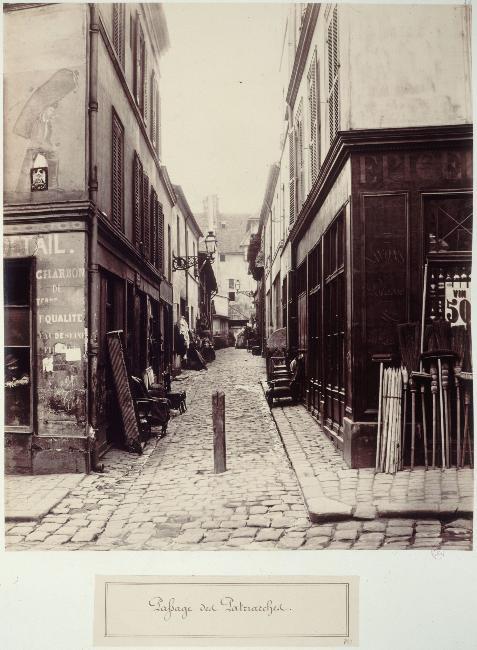
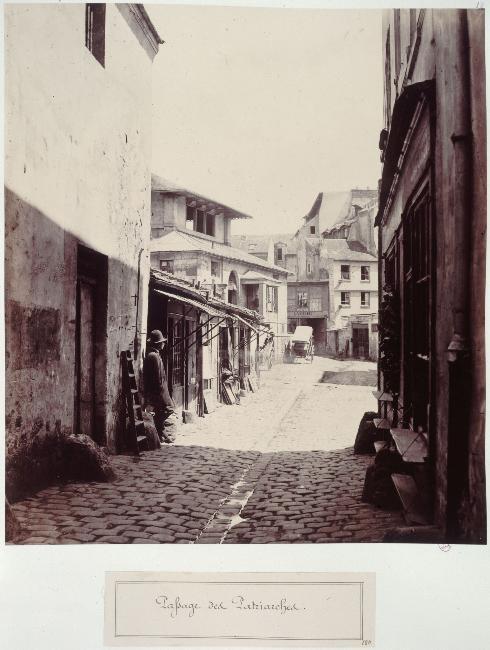
"strode along the Rue de l’Épée-de-Bois

and the Rue de l’Arbalète, and plunged into the Rue des Postes."




"At that time there was a square formed by the intersection of streets, where the College Rollin stands to-day, and where the Rue Neuve-Sainte-Geneviève turns off." (Note: these streets are labeled Montagne-Sainte-Geneviève, but not Neuve-Sainte-Geneviève, so they may be different streets! But I'm putting them here anyway.)
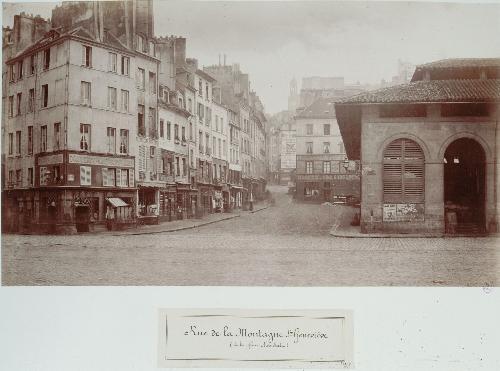


"It is understood, of course, that the Rue Neuve-Sainte-Geneviève is an old street, and that a posting-chaise does not pass through the Rue des Postes once in ten years. In the thirteenth century this Rue des Postes was inhabited by potters, and its real name is Rue des Pots." (Annotation: Hugo's bein silly and making little puns. He's snarkily pointing out the "new saint-genevieve street" is old, and the post street rarely has post-chaises/carriages go through it.)
(Jean Valjean hides in the shadows and watches to see who shows up in this big square intersection of streets. In the moonlight, he recognizes Javert.)
"He slipped from under the gate where he had concealed himself, and went down the Rue des Postes (which I shared a picture of previously), towards the region of the Jardin des Plantes." (Note: the Jardin des Plantes is a royal garden. Here is a modern photo from Wikipedia.)

"He left behind him the Rue de la Clef,

"then the Fountain Saint-Victor, skirted the Jardin des Plantes by the lower streets, and reached the quay. There he turned round. The quay was deserted. The streets were deserted. There was no one behind him. He drew a long breath.
He gained the Pont d’Austerlitz."
(The Pont d'Austerlitz, named after Napoleon's victory at the battle of Austerlitz, is a very famous bridge. Marville has no photographs but here's an 1830 engraving:)

"The bridge once crossed, he perceived some timber-yards on his right. He directed his course thither. In order to reach them, it was necessary to risk himself in a tolerably large unsheltered and illuminated space. He did not hesitate. Those who were on his track had evidently lost the scent, and Jean Valjean believed himself to be out of danger. Hunted, yes; followed, no."
Here's the quai by the pont-au-change-- a different quai, but gives you an idea of what the areas around the Seine often looked like.
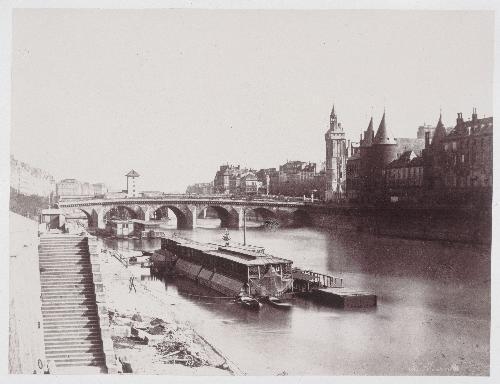
(Then Jean Valjean sees Javert and the other police on the Bridge of Austerlitz, following him. He hurries towards the darker alleys of the city.)
"A little street, the Rue du Chemin-Vert-Saint-Antoine, opened out between two timber-yards enclosed in walls. This street was dark and narrow and seemed made expressly for him."
Here's an abandoned timber-yard-ish looking picture:

But Marville has no photographs of this street. I'd have to double check, but iirc this is the part where Hugo starts to 'make up' more street layouts. I wouldn't be surprised if this street really WAS made expressly for him (meaning Hugo made it up.)
"The point of Paris where Jean Valjean found himself, situated between the Faubourg Saint-Antoine and la Râpée, is one of those which recent improvements have transformed from top to bottom,—resulting in disfigurement according to some, and in a transfiguration according to others. The market-gardens, the timber-yards, and the old buildings have been effaced. To-day, there are brand-new, wide streets, arenas, circuses, hippodromes, railway stations, and a prison, Mazas, there; progress, as the reader sees, with its antidote."
(Here Hugo talks about the Haussman renovations directly, claiming that if his street layouts are "inaccurate" it's because these are some of the Old Medieval Streets that were razed during Paris's recent renovations. He goes on for a while comparing Petit-Picpus to various other areas that were changed during the renovations.)
"Le Petit-Picpus, which, moreover, hardly ever had any existence, and never was more than the outline of a quarter, had nearly the monkish aspect of a Spanish town. The roads were not much paved; the streets were not much built up. (....) Such was this quarter in the last century. The Revolution snubbed it soundly. The republican government demolished and cut through it. Rubbish shoots were established there. Thirty years ago, this quarter was disappearing under the erasing process of new buildings. To-day, it has been utterly blotted out."
The Petit-Picpus, of which no existing plan has preserved a trace, is indicated with sufficient clearness in the plan of 1727, published at Paris by Denis Thierry, Rue Saint-Jacques, opposite the Rue du Plâtre;

and at Lyons, by Jean Girin, Rue Mercière, at the sign of Prudence.
Petit-Picpus had, as we have just mentioned, a Y of streets, formed by the Rue du Chemin-Vert-Saint-Antoine, which spread out in two branches, taking on the left the name of Little Picpus Street, and on the right the name of the Rue Polonceau. The two limbs of the Y were connected at the apex as by a bar; this bar was called Rue Droit-Mur.
The Rue Polonceau ended there; Rue Petit-Picpus passed on, and ascended towards the Lenoir market. A person coming from the Seine reached the extremity of the Rue Polonceau, and had on his right the Rue Droit-Mur, turning abruptly at a right angle, in front of him the wall of that street, and on his right a truncated prolongation of the Rue Droit-Mur, which had no issue and was called the Cul-de-Sac Genrot."
Here is @everyonewasabird's attempt to puzzle this out:

It was here that Jean Valjean stood."
Then Jean Valjean escapes by pulling down an old oil lantern, strung up by ropes. Hugo notes that this would have been "impossible if the streets were lit with gas, the way they would be after the renovations. This picture shows an old oil lamp strung up by ropes:

Finally, Jean Valjean climbs over the wall into the Petit-Picpus convent. This convent is fictional. Hugo pretends it used to exists but is no longer around-- another relic of the early 19th century that has been lost over time.
TLDR:
Jean Valjean's escape through Paris is Hugo way of mourning the Paris he knew from before his exile, the Paris before the modern renovations. To quote Volume 2 Book 5 Chapter 1:
The author of this book, who regrets the necessity of mentioning himself, has been absent from Paris for many years. Paris has been transformed since he quitted it. A new city has arisen, which is, after a fashion, unknown to him. There is no need for him to say that he loves Paris: Paris is his mind’s natal city. In consequence of demolitions and reconstructions, the Paris of his youth, that Paris which he bore away religiously in his memory, is now a Paris of days gone by. He must be permitted to speak of that Paris as though it still existed. It is possible that when the author conducts his readers to a spot and says, “In such a street there stands such and such a house,” neither street nor house will any longer exist in that locality. Readers may verify the facts if they care to take the trouble. For his own part, he is unacquainted with the new Paris, and he writes with the old Paris before his eyes in an illusion which is precious to him. It is a delight to him to dream that there still lingers behind him something of that which he beheld when he was in his own country, and that all has not vanished. So long as you go and come in your native land, you imagine that those streets are a matter of indifference to you; that those windows, those roofs, and those doors are nothing to you; that those walls are strangers to you; that those trees are merely the first encountered haphazard; that those houses, which you do not enter, are useless to you; that the pavements which you tread are merely stones. Later on, when you are no longer there, you perceive that the streets are dear to you; that you miss those roofs, those doors; and that those walls are necessary to you, those trees are well beloved by you; that you entered those houses which you never entered, every day, and that you have left a part of your heart, of your blood, of your soul, in those pavements. All those places which you no longer behold, which you may never behold again, perchance, and whose memory you have cherished, take on a melancholy charm, recur to your mind with the melancholy of an apparition, make the holy land visible to you, and are, so to speak, the very form of France, and you love them; and you call them up as they are, as they were, and you persist in this, and you will submit to no change: for you are attached to the figure of your fatherland as to the face of your mother.
107 notes
·
View notes
Text
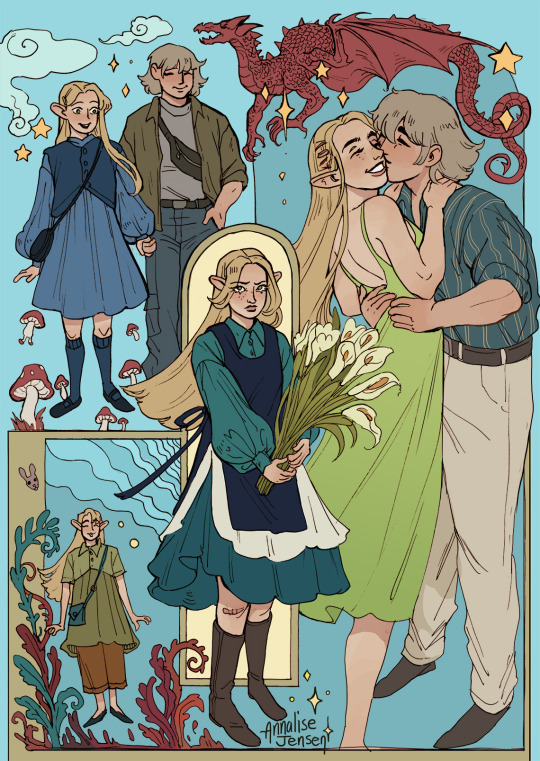
Marcille and Falin wear cute outfits and are probably on a date looking for plants to adopt
9K notes
·
View notes
Text


Ergebnisse der Abstimmung zum Selbstbestimmungsgesetz.
302 notes
·
View notes
Text
(April 12th 2024)

No medical confirmation or psychological evaluation necessary. The law will be active by the 1st of November this year.
First names can also be changed while changing gender. One all inclusive package with minimum effort.
#german stuff#this law has some flaws and hoo boy has the road been rocky#but nonetheless#i'm elated it passed#i didn't quite think it ever would
27K notes
·
View notes
Text
Moral purity and imaginative resistance as influencing factors in fandom 'anti' attitudes
Jessica Black et al.'s 2019 experiment on the correlation between enjoying dark/villainous characters, personal morality and purity beliefs, and imaginative resistance is so interesting when applying it to anti culture and fandom.
They created a Dark Character Scale where participants self-selected how strongly in agreement or disagreement they were with a series of statements about dark or villainous fictional characters. Some of these questions were the following:
"I enjoy films and books that feature main characters that choose morally questionable actions."
"I can often understand where the bad guys in fiction are coming from."
"My favourite fictional characters are morally ambiguous and often do horrible things."
They then utilised the Moral Foundations Questionnaire (Graham et al. 2011) to see what participants considered important when deciding on whether something is morally right or wrong, for example:
Whether or not someone suffers emotionally
Whether or not someone did something disgusting*
Whether or not someone was cruel
Whether or not someone was denied [their] rights
Whether or not someone acted in a way God would approve of*
as well as how strongly participants agreed or disagreed with statements such as:
Compassion for those who are suffering is the most crucial virtue
People should not do things that are disgusting, even if no one is harmed*
It can never be right to kill a human being
I would call some acts wrong on the grounds that they are unnatural*
Respect for authority is something all children need to learn.
One of the final scales participants used was the Black & Barnes (2017) Imaginative Resistance Scale. This is basically used to gauge how resistant the reader is to enjoying or consuming fictional content that contains characters, situations, or worldbuilding that they personally find morally disagreeable. They had to select how strongly they agreed/disagreed with questions like:
Reading books where bad things are depicted as morally acceptable makes me feel dirty
I just can't go along with a story when it violates my beliefs about morality
At times it feels like the author of a book is asking me to endorse actions that I know are wrong
Some things just shouldn't be done, even within a book
I sometimes cannot go along with a story when the "good" characters do morally reprehensible things
Sympathising with immoral characters makes me feel immoral myself.
Unsurprisingly, analysis of the data revealed that there was a strong correlation between disliking or not enjoying dark fictional characters or villains and having a higher purity morality score and more imaginative resistance.
They performed this test in three studies done on three completely different demographics - the first being mostly liberal women from social media sites, the second being mostly younger conservative college undergrads, and the third being adults split 50/50 in gender recruited from MTurk. All three studies showed that having stronger imaginative resistance and higher purity morality scores is directly linked to a lower score on the DCS - meaning that they would like or enjoy dark fictional characters and their actions less.
This tracks pretty well with what can be seen in the emerging anti culture within fandom:
Self-identified 'antis' are likely to agree strongly with the statements from the Imaginative Resistance Scale, and are more likely to score highly on the questions in Moral Foundations Questionnaire that are specifically demarcated as being concerned with purity (marked above with an asterisk *). This means that they are also, according to these studies, much more likely to disagree with dark fictional characters and their actions.
There is also a very interesting point in one of the discussions areas where Black et al. state "It is worth reiterating that the participants in Study 2 tended to be more conservative, and therefore potentially more likely to have greater concerns about moral purity" which tracks with what people in fandom have been saying about antis parroting conservative/puritan talking points and arguments.
What I find the most interesting is the following statement:
"However, moral purity and imaginative resistance are consistently positively correlated, both in the current studies and in prior research ... and are both likely to reflect a fear of moral contagion that would discourage people from identifying with and liking [dark fictional characters]."
This, when applied to antis, suggests that antis may harbor the subconscious belief that enjoying dark fictional content, and therefore being a 'proshipper', is literally psychically contagious. They may view this as some kind of moral disease which is spreading and infecting fandom, which could explain why they are so vehemently against it - fear. This is the puritan Moral Panic all over again.
Black et al. also discuss theories of fictional engagement and parasocial relationships/identification, and whether these studies is relevant to "when and for whom fictional engagement could have the potential to negatively affect real world attitudes or behaviour".
Jessica Black and Jennifer Barnes often publish articles together and have some incredibly interesting reading of morality and fiction that I'd be interested to see applied to fandom and anti culture in an academic setting. Perhaps some people in the field like Samantha Aburime (@rainystudios) are already looking into it - and I'm hoping I can do the same in my studies.
248 notes
·
View notes
Text

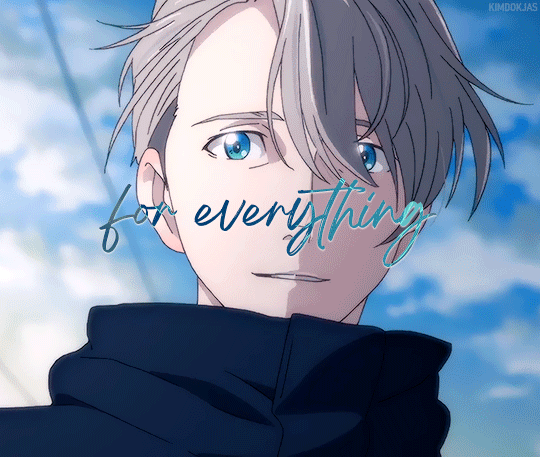
though the movie might be cancelled, yuri on ice will live forever in our hearts. thank you yoi fandom, it's been real ♡
9K notes
·
View notes
Text


incredible translation of sheeesh thank you google
4K notes
·
View notes

